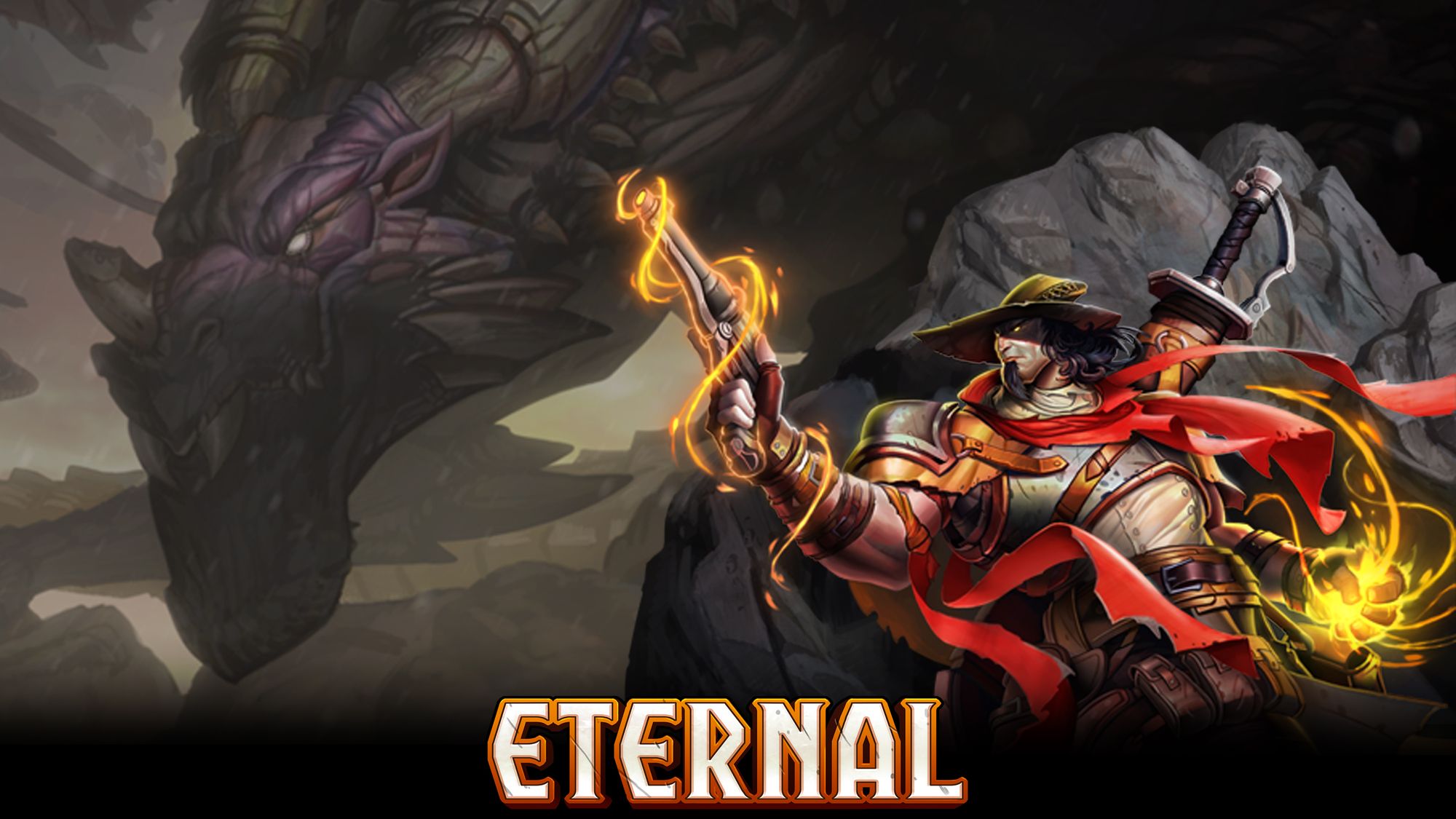Can Dire Wolf Digital’s Eternal be the Next Hit Digital Collectible Card Game?
Dire Wolf has been building successful CCGs for other publishers for years, but now it is bringing that success to its own self published title.

Dire Wolf has been building successful CCGs for other publishers for years, but now it is bringing that success to its own self published title.
I have been passing by Dire Wolf Digital booths at conferences for years, occasionally stopping, but mostly admiring the well designed booth and interesting logo. To the uninformed, Dire Wolf appears to be a mid-level indie developer and publisher, presenting a few games each year. It was not until I began to delve into the world of collectible card games that I began to realize that this unassuming indie developer was actually a compelling force in digital card gaming, quietly generating hits, and moving methodically toward its own self-publishing success.
Dire Wolf has been building digital versions of CCGs for years, working with some of the largest publishers in the genre. They continue to be responsible for Pokemon TCG Online since first developing and releasing the game in 2011. Additionally, Dire Wolf was the original developer behind The Elder Scrolls: Legends, Bethesda Softworks's entry into the genre. During Dire Wolf's time as that title's developer, TES: Legends saw significant success, and when Bethesda transitioned the game to a new developer and client, the player base noticeably suffered.
Freed from its obligations to TES: Legends in mid-2018, Dire Wolf has been able to focus on its own self-published entry into the genre, Eternal. As with many successful indie titles, Eternal has been something of a slow burn, growing slowly and steadily throughout 2018, but its trajectory has been trending noticeably upward since the transition. Nowhere is this more noticeable than in its Twitch engagement.
We looked at Eternal as part of our report on the State of the Digital Collectible Card Game Genre on Twitch. What we found was fascinating. As of March 2019, Eternal sat in fifth position for hours watched in the genre, having grown steadily to that position despite significant competition. Neither the rise of Magic: The Gathering Arena, the rise and fall of Artifact, nor the introduction of Auto Chess seemed to slow it down.
Eternal’s rise on Twitch has been very interesting. Its numbers were fairly minimal throughout much of 2018 until steeply rising through the fall, peaking in October and contracting slightly before leveling off.
Typically we would associate this kind of behavior with a popular content release, but Dire Wolf is extremely consistent in its updates for Eternal, putting out new content at regular intervals. Hearthstone, which puts out content quarterly, sees spikes and dips any time a new release arrives.
We would expect Eternal to show the same behavior. Rather than following the rise and fall of content releases, Eternal’s rise coincided with Dire Wolf’s experimentation with competitive in-game tournaments. This suggests a player base that has legs in the esports arena, which is key for a CCG title. Hearthstone has long been a force in esports, and Magic: The Gathering Arena held a successful tournament at PAX East this year. If Eternal can continue to capitalize on its audience's desire for competitive play, it may have a shot at pushing things even higher.
Perhaps the most fascinating and promising elements of Eternal’s rise on Twitch can be found by looking at its unique channel numbers. Its content creation community is still fairly small. In March, it had just over 400 content creators on Twitch, dead last among the games included in our report. However, that small community was able to lift Eternal past titles with much larger communities in terms of viewership and engagement. This suggests a level of productivity and dedication from its content creators and a hunger for content from its audience that is extremely promising.
Strong growth in audience, coupled with a content creator base that has established itself as a strong foundation upon which there is plenty of room to grow means that Dire Wolf has a big opportunity on Twitch. While the streaming community isn’t completely representative of total players, and Twitch success does not always equal general sales success, the two things are absolutely related.
With the right strategy, Dire Wolf could grow its content creator base, and continue to move up the ranks. While the two biggest games in the genre are still a long way away, the third and fourth most successful titles (Slay the Spire and Gwent, respectively) are within reach. Gwent beat Eternal by just 313,000 hours watched, and Spire by only 200,000 hours. The key, however, is that Gwent needed 900 more content creators than Eternal to generate its hours watched, and Spire over 3500.
Gaming is filled with niche genres, some with larger followings than others. Collectible card games have been a strong genre in gaming since the 1990s, and digital versions have only increased that visibility. Hearthstone and Twitch have put DCCGs on the map in a big way over the last few years, but the space is quickly becoming more competitive. Magic: The Gathering Arena is still the safest bet to challenge Hearthstone, while titles like Slay the Spire and Gwent seem to have found their audience.
If you are betting person, and you like a little risk, the biggest potential upside in the genre right now is Eternal. It has a great developer focused on its success with a content community that has the potential to explode under the right circumstances. We are extremely interested to watch what happens with Eternal through the rest of 2019.
If you want a more in-depth look at Eternal and other titles making an impact on this dynamic niche genre on Twitch, you can find our full report here. Also, be sure to go back and check out our Auto Chess investigation, and to follow us on Twitter and LinkedIn for all the latest blogs, announcements, and game marketing news from the team at GAMESIGHT!

